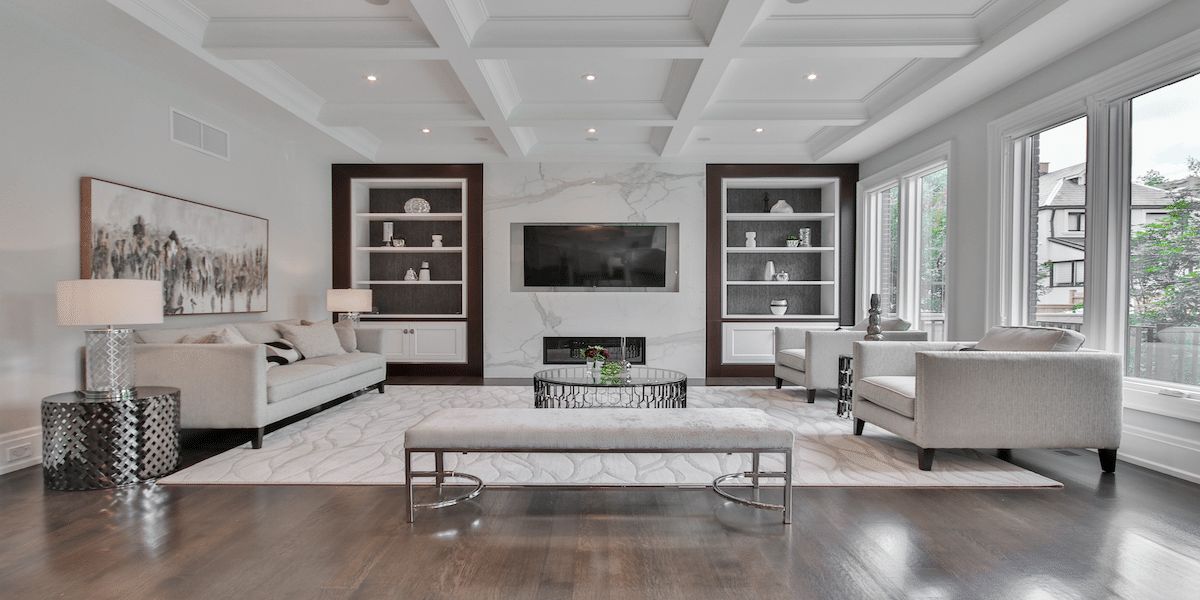The Art of Interior Design: Creating Beautiful and Functional Spaces
Image commercially licensed from Unsplash
Interior design is an intricate art form that goes beyond merely arranging furniture and picking color schemes. The focus lies in crafting harmonious, inviting, and functional spaces that mirror the personality and lifestyle of those who dwell within. The way a room is designed can have a profound impact on our emotions, mood, and overall well-being. In this blog post, we will delve into the world of interior design, exploring the key principles and elements that help transform any space into a haven of beauty and functionality.
Understanding the Power of Interior Design
Interior design is a powerful tool that allows us to customize our living spaces and turn houses into homes. It is the art of blending aesthetics with functionality, where creativity and practicality come together to craft spaces that resonate with our individuality. Whether it’s a cozy living room, a productive home office, or a relaxing bedroom, interior design can influence our daily lives and leave a lasting impression on our experiences.
The Role of Color and Lighting
One of the most fundamental aspects of interior design is the use of color and lighting. Colors evoke emotions and set the tone for a room, while lighting can create ambiance and enhance the overall atmosphere. From warm and inviting hues for communal areas to serene and soothing tones for bedrooms, the right color palette can completely transform a space. Equally important is lighting, which should be strategically placed to accentuate focal points and ensure ample illumination for various activities.
Furniture and Layout
Furniture selection and layout play a crucial role in interior design. The right furniture pieces can make a statement and tie the room’s design together cohesively. Comfort and functionality should be prioritized, ensuring that each piece serves a purpose while contributing to the overall aesthetic. Furthermore, the arrangement of furniture should facilitate easy movement and create a sense of balance within the room.
The Charm of Interior Wood Shutters
When it comes to window treatments, interior wood shutters are an elegant and timeless choice that can instantly elevate the appeal of any room. These shutters offer both privacy and control over natural light, making them practical additions to any living space. Beyond functionality, interior wood shutters add a touch of sophistication and warmth to the room. Their natural beauty and versatility complement various design styles, from rustic farmhouses to modern chic.
Accessorizing with Art and Decor
To infuse personality into a space, art, and decor play a pivotal role. Artwork can be a reflection of your tastes and interests, while decorative elements like rugs, cushions, and curtains add texture and depth to the room. The key is to strike a balance between minimalism and clutter, ensuring that each piece adds value and complements the overall design.
Embracing Natural Elements
Incorporating natural elements into interior design can create a sense of serenity and connection with the outdoors. Plants, for instance, not only bring life and freshness to a room but also purify the air and provide a calming effect. Additionally, using sustainable materials like reclaimed wood, organic fabrics, and eco-friendly finishes can promote environmental consciousness while enhancing the overall aesthetic.
Personalization and Adaptability
Every individual’s lifestyle and preferences differ, and interior design should reflect these unique qualities. Personalization is key to creating a space that feels like home. Moreover, designing with adaptability in mind ensures that the space can evolve as your needs change over time. Flexible layouts, multi-purpose furniture, and versatile decor items all contribute to a space that grows with you.
Sustainable and Mindful Design
In recent years, there has been a growing focus on sustainable and mindful interior design. As we become more conscious of our impact on the environment, eco-friendly design practices have gained momentum. Opting for energy-efficient appliances, using recycled materials, and choosing sustainable furnishings are just some of the ways to reduce our carbon footprint while creating beautiful spaces. Mindful design also emphasizes the importance of creating spaces that promote well-being and mental health. Introducing elements like natural light, adequate ventilation, and spaces for relaxation can contribute to a calming and nurturing environment that enhances our overall quality of life.
The art of interior design is a beautiful blend of creativity, functionality, and personal expression. From the selection of colors and furniture to the incorporation of natural elements, each aspect plays a vital role in shaping the ambiance of a room. Whether you seek a cozy sanctuary to unwind or a vibrant space to inspire creativity, interior design empowers you to craft spaces that resonate with your heart and soul. So, embrace your creativity, explore design ideas, and let the magic of interior design unfold in your living spaces.




